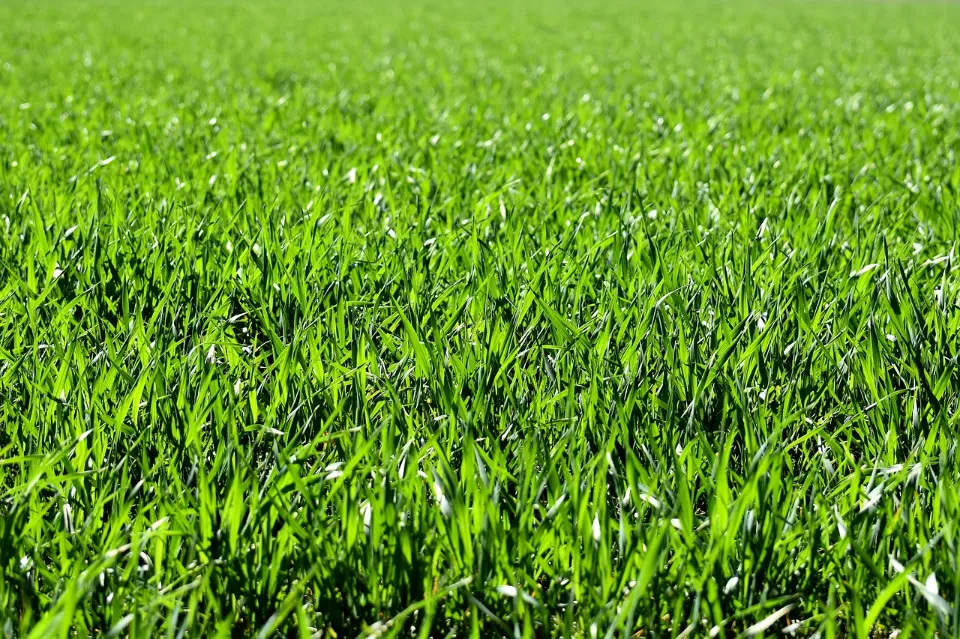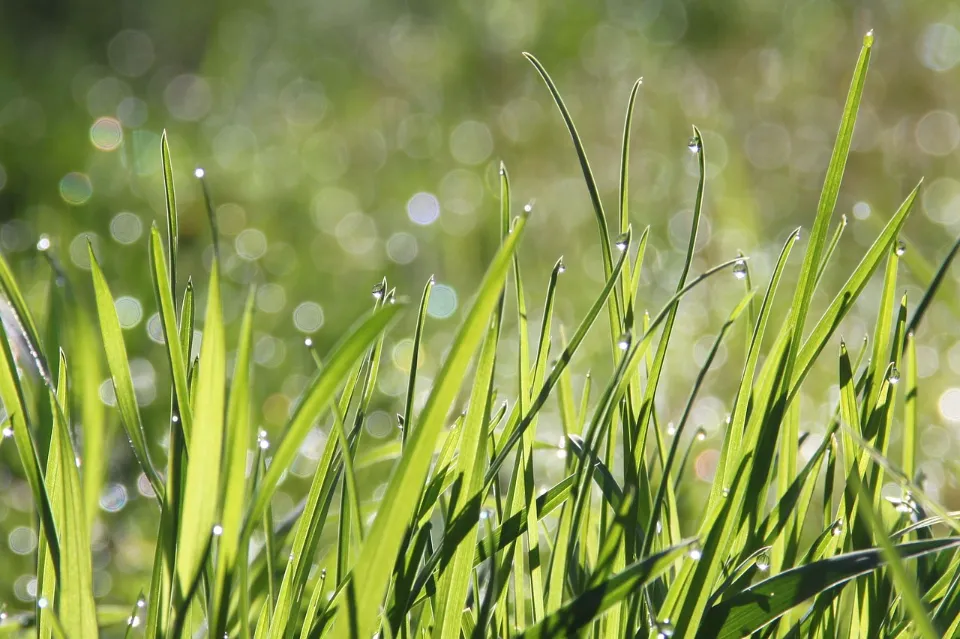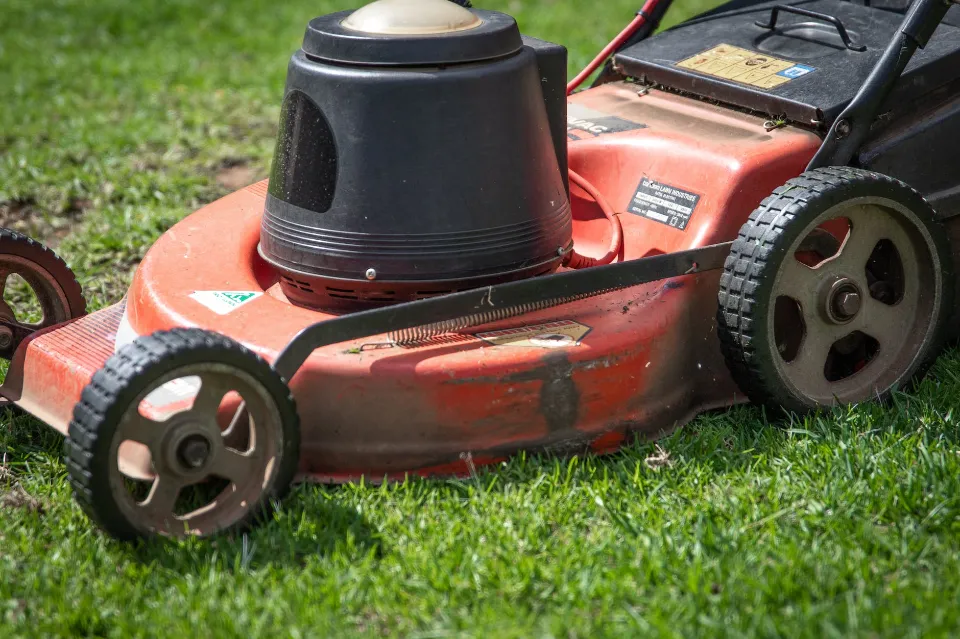Whether it’s a sports field or your neighbor’s big-league landscaping that’s giving you lawn envy, a technique called lawn striping will give your yard that manicured look. However, it’s not quite as simple as simply mowing in a straight line or various directions.
You should be very careful where you mow when using a basic striping technique, which involves first mowing the perimeter of your lawn and turning to make parallel lines.
Here’s how to stripe a lawn, whether you want a simple stripe or a more elaborate design.
What is Lawn Striping?

Even if you’re not a sports fan, you’ve probably seen striped designs on golf courses, outfields, or even on the lawn next door. What exactly is lawn striping then? Lawn striping is nothing more than simply bending the grass blades in one direction while mowing. The grass blades appear darker when bent toward you and lighter when bent away from you.
Also Read: How Often Should You Apply Sulfur to Lawn – 2023 Guide
How Striping Works
By bending the grass blades in opposing directions while mowing, you can make stripes in your lawn. On grass that is twisted one way versus the other, light reflects differently.
Keep that basic principle in mind. Everything else you do will increase the amount of bend and make it last longer, from selecting the type of grass to the equipment you use to mow.
Why Should I Stripe My Lawn?
Owning a home requires regular lawn maintenance. Why not enhance the beauty of your lawn while you’re already cutting it? In short, there is no reason you should stripe your lawn other than for aesthetics, with one exception. Even if you don’t care about mowing stripes into your lawn, it is a good idea to vary your mowing pattern every few weeks. This should be done even if you don’t stripe your lawn.
The Secrets to Success
How & Why Stripes Appear
Making stripes in your lawn depends on a number of factors. But first, it’s crucial to understand how and why stripes first appear.
Any lawn that has stripes on it is due to the sun’s reflection off the grass blades’ orientation.
Even when the sun is hidden by clouds, enough light is still passing through to reflect off of grass. But the more sunshine there is, the more the stripes will show.
Why then are some of the stripes darker in some places and lighter in others? Which way the mower passes over them is crucial. How the grass is bent to reflect the sun is also important to note.

Light and Dark Stripes in a Lawn
The lines on a lawn that are striped always appear lighter when you look away from them and darker when you are looking toward them. This is due to the fact that as the mower’s blades cut the grass, they are pushed or bent forward.
As you mow back and forth, the blades are then bent in opposite ways as you go in each direction. You then get the dark or light stripes from the reflection depending on which way the sun is shining on them.
How You Mow Matters
So how should you mow if you want to make lovely stripes in your yard?
To begin with, you must always mow back and forth in the same two directions throughout a single mowing. And that means no mowing in squares or sections, but long back and forth passes.
Striping is impossible when you mow in squares or divide up sections of your lawn to mow.
Instead, begin at one side or end of your lawn and work your way across. Going back and forth in the same two directions as you all the time. Due to the mower’s ability to bend the grass blades in just two directions, stripes are produced.
How to Stripe a Lawn Like a Pro
Are you prepared for the big leagues, sports fans? Let’s get striping!
Step 1: Get Your Gear
It’s simple if you have cool-season grass. You can stripe cool-season lawns with just your mower’s rear skirt.
Plan to step it up if you have warm-season grass. With the use of a lawn striper, also known as a striping kit, warm-season grasses bend more easily. The rear skirt on your mower isn’t sufficient. Get a kit, add sand to it, and fasten it to your mower by purchasing it online or offline.
Step 2: Choose a Pattern
What design would you like to have indentations in your lawn? Start with basic stripes during the first week if you’re learning this skill. The following week, try mowing perpendicular to last week’s stripes to make a checkerboard pattern. In the third week, try a diagonal, and so on.
Don’t expect to mow a pristine lawn on your first try. To develop this skill, practice is required.
Step 3: Know Your Line of Sight
Where do you expect to see your lawn the most? Plan your design to run parallel to this vantage point for the eye-catching results you want. You won’t notice a design as much if it is perpendicular to your main line of sight.
Step 4: Start Mowing

You are prepared to mow once you have selected your pattern and line of sight.
- Trim the grass around the edge (striper attachment optional).
- If you’re a beginner, start cutting a straight line. Your first stripe will be more straight if you follow a curb, driveway, or walkway.
- Mow the lawn in the opposite direction by turning the mower around. Tip: To prevent bending your striped grass in the wrong direction, turn around in the perimeter area.
- Continue until the entire lawn has been mowed.
- Mow the perimeter once more (optional) after you’ve finished mowing to remove any turn marks.
Striping Tips
If you want to stripe your lawn well, then you first need to start by selecting a pattern. Do this prior to initiating any mowing work. Create a plan that depicts the desired pattern. Make sure the layout of your lawn can be supported by the design. Diamonds, checkerboards, and traditional stripes are your options.
Be very mindful of where you are mowing. Pay close attention to where you move your lawnmower if you want to avoid a curved design approach. Keep your lines as straight as you can. Keep your eyes off the floor below you. This can lead to results that are less than neat and flawless.
Boost the quality of your lawn stripes. The simple pattern for your stripes is established by mowing work. However, you must draw attention to your stripes if you want your lawn to have a particularly strong impact. A lawn roller will help you accomplish this. These rollers can push the blades of your grass. Once more, push the grass in the same direction along the previously mowed stripes. If you follow through with that, you will see significant and gratifying changes.
If you want your pattern to be especially memorable, then you should to mow in a “high” way. You can get your hands on grass that is noticeably smoother if you choose a setting that is especially high. This method can be very effective if you want your grass to be flexible. Shorter grass blades don’t perform as well. Short grass will lead to patterns that are a lot more subtle, too. Take note of this if you want your patterns to stand out. How subtly you adjust your elevation is irrelevant. It might produce a result that is remarkably striking.
Which Grass Types Are Best for Lawn Stripes?

You most likely have cool-season grass if you reside in the country’s north. In the northern Transition Zone, cool-season grass is also common on lawns. These grass blades bend more easily and produce a better striping effect. With a regular push mower’s rear skirt and the blades’ greater malleability than those of most warm-season grasses, you can achieve good striping results.
Warm-season grasses have stiffer blades and require more heft to get that professional look you’re after. To get a good result, you should invest in (or construct your own) professional striping equipment and mount it to the back of your lawnmower.
If you’re not sure which type of grass you have, check out this handy map. A list of typical grass types for each region is also provided below. Note: Both cool- and warm-season grasses grow in the Transition Zone.
Cool-season grasses:
- Fine fescues
- Kentucky bluegrass
- Perennial ryegrass
- Tall fescue
Warm-season grasses:
- Bahiagrass
- Bermudagrass
- Centipedegrass
- St. Augustinegrass
- Zoysiagrass
Conclusion
Lawn edging enhances curb appeal, encourages healthier grass growth, and, most importantly, makes your neighbors envious. Lawn stripes can also serve as a visual guide to let you know where you need to apply fertilizer or other control products.
Maintaining the health of your grass will be made easier by striped lawns. With each row, if your lawn is properly striped, you will change the direction you mow it. Your grass will grow more healthily if you ensure you modify the way you mow your lawn. If you consistently mow your lawn in the same direction, the taller blades will grow a canopy over them, shielding them from the sun until they die.
FAQ About Striping Your Lawn
1. How Can I Fix a Mistake?
Don’t worry if you veer off the path while mowing. Assume for a moment that you are swatting a mosquito and accidentally veer right into the lane you just finished. To correct the error, cut both your current row and the row before it again.
2. Will My Lawn Look Like a Professional Sports Turf When I’m Done?
For one straightforward reason—it will be taller—your lawn will differ slightly from a baseball field or other professional turf. On putting greens, professional groundskeepers can only mow sports turf down to an eighth of an inch. As we already mentioned, a taller cut will give your lawn a more pronounced striping appearance.
3. How Do I Stripe My Lawn Around An Obstacle?
Let’s say you want your stripes to remain in a straight line across the driveway or on both sides of a swing set. As you mow, keep an eye 10 feet in front of you, straight ahead. This will make it easier for you to keep moving in a straight line as you go around the obstruction and start mowing again on the other side.








